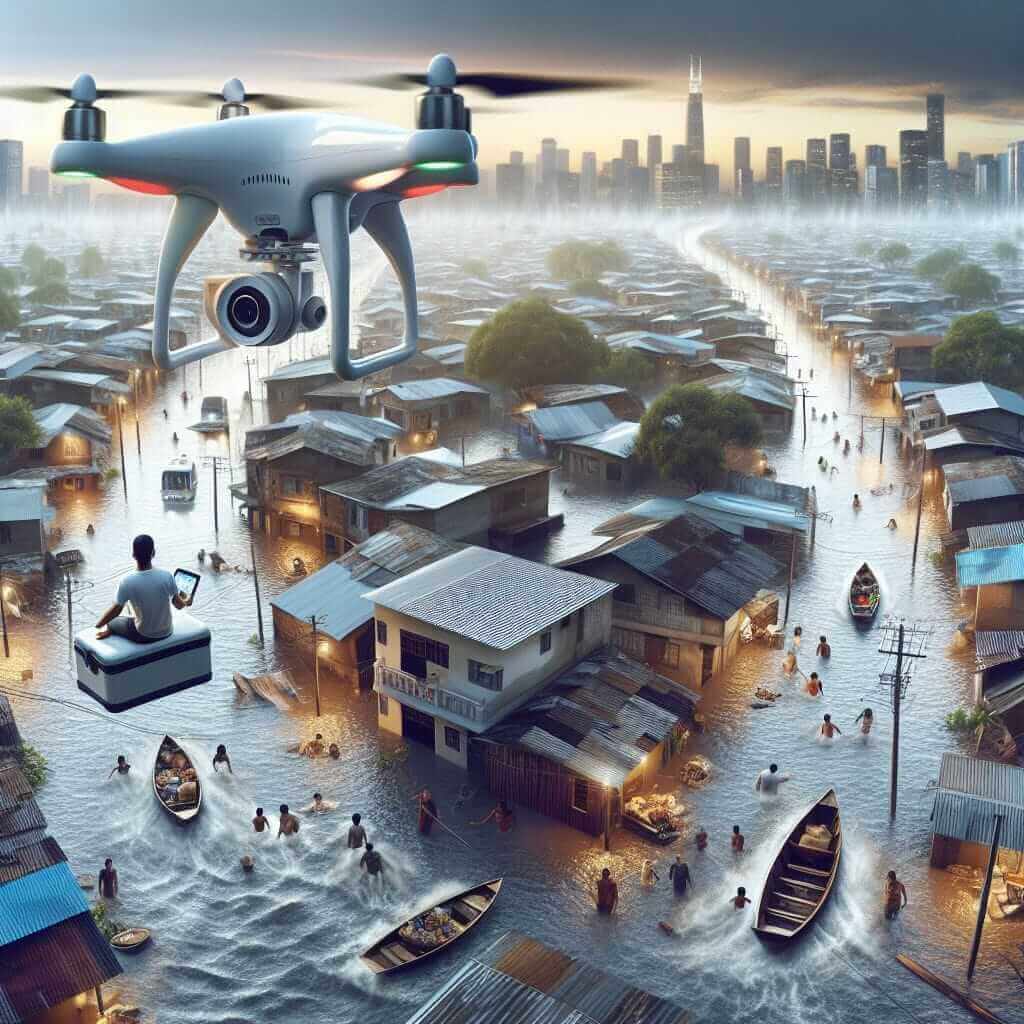The IELTS Reading section is designed to evaluate a candidate’s ability to understand, interpret, and analyze written English. Over recent years, themes surrounding technology and its transformative impact on various sectors have frequently appeared in IELTS Reading passages. Given the increasing frequency and severity of natural disasters worldwide, the intersection of technology and disaster relief has become an extremely relevant and timely topic. Candidates should be well-prepared for reading passages on such current issues.
Main Content
1. Sample Reading Passage: Medium Text
How is Technology Transforming Disaster Relief Efforts?
In recent years, technological advancements have significantly enhanced the efficiency and effectiveness of disaster relief efforts. From early warning systems to the deployment of drones and artificial intelligence, technology is playing a crucial role in improving disaster response and recovery. This revolution is driven by the need to mitigate the adverse effects of natural disasters and ensure rapid humanitarian aid to affected regions.
One notable technological advancement is the adoption of early warning systems. These systems gather data from various sources, including weather satellites, seismic sensors, and ocean buoys, to predict natural disasters such as hurricanes, earthquakes, and tsunamis. By providing timely warnings, these systems enable governments and communities to take preventive measures, such as evacuations and infrastructure fortifications. This greatly reduces the loss of life and property.
The use of drones has also transformed disaster relief operations. Drones equipped with high-resolution cameras and sensors can quickly assess damage, locate survivors, and deliver essential supplies to remote or inaccessible areas. Their real-time aerial images offer invaluable information to rescue teams, aiding in more efficient and targeted relief efforts.
 Drone in Disaster Relief
Drone in Disaster Relief
Artificial intelligence (AI) and machine learning are further revolutionizing disaster management. AI algorithms analyze vast amounts of data to predict the occurrence and impact of natural disasters with great accuracy. For example, machine learning models can process satellite images to identify areas at high risk of flooding or landslides. This predictive capability allows for better preparation and allocation of resources.
Furthermore, social media and mobile applications are being leveraged to enhance communication during disasters. Platforms like Twitter and Facebook enable real-time information sharing, allowing individuals to report their status and request help. Emergency response teams use social media analytics to monitor public sentiment and assess the needs of affected populations.
Blockchain technology is another innovative tool being used in disaster relief. Blockchain’s decentralized and transparent nature ensures secure and efficient distribution of humanitarian aid. It helps in tracking the delivery of supplies, preventing fraud, and ensuring that resources reach the intended recipients.
In conclusion, technology is profoundly transforming disaster relief efforts by providing tools that enhance early warning, damage assessment, resource allocation, and communication. As technology continues to evolve, its integration into disaster management will undoubtedly save more lives and speed up recovery processes.
2. Sample Questions and Answers
Questions:
-
Why are early warning systems important in disaster relief?
- A) They help in monitoring weather patterns.
- B) They provide data for predicting natural disasters.
- C) They enable timely preventive measures.
- D) Both B and C.
-
According to the passage, how do drones assist in disaster relief?
- A) They replace human rescue teams.
- B) They provide high-resolution images and deliver supplies.
- C) They predict the occurrence of disasters.
- D) They communicate with social media platforms.
-
What role does AI play in disaster management?
- A) It replaces human rescuers.
- B) It analyzes data to predict and prepare for disasters.
- C) It primarily operates drones.
- D) It collects data from social media.
-
How does blockchain technology improve humanitarian aid distribution?
- A) By encrypting messages.
- B) By ensuring secure and transparent delivery of supplies.
- C) By predicting disasters.
- D) By operating social media platforms.
-
Which of the following statements is FALSE according to the passage?
- A) Drones can locate disaster survivors.
- B) AI helps in identifying high-risk areas for floods.
- C) Blockchain prevents fraud in the distribution of aid.
- D) Social media platforms deliver essential supplies.
Answer Keys:
- D) Both B and C – Early warning systems are important because they provide data for predicting natural disasters and enable timely preventive measures.
- B) They provide high-resolution images and deliver supplies – Drones assist in disaster relief by offering real-time aerial images and delivering essential supplies.
- B) It analyzes data to predict and prepare for disasters – AI plays a critical role in analyzing vast amounts of data to predict and prepare for natural disasters.
- B) By ensuring secure and transparent delivery of supplies – Blockchain technology improves humanitarian aid distribution by ensuring secure and transparent delivery.
- D) Social media platforms deliver essential supplies – The passage does not state that social media platforms deliver supplies; they are used for communication and information sharing.
Common Mistakes and Tips:
- Misinterpreting the Passage: Read carefully to distinguish between ‘prediction’ and ‘monitoring’. Ensure you understand the technology’s specific application.
- Matching Headings and Information: Practice matching subheadings with paragraph content to master this common question type.
- Inferences: Avoid making assumptions beyond the information provided in the passage. Stick to the facts mentioned.
3. Vocabulary Enhancement:
- Mitigate /ˈmɪtɪɡeɪt/ (verb) – To make less severe or serious.
- Deploy /dɪˈplɔɪ/ (verb) – To move troops or equipment into position for military action.
- Resilient /rɪˈzɪliənt/ (adjective) – Able to withstand or recover quickly from difficult conditions.
- Fortification /ˌfɔːtɪfɪˈkeɪʃn/ (noun) – Military constructions designed for defense in warfare.
- Predictive /prɪˈdɪktɪv/ (adjective) – Relating to predicting an event or result.
4. Grammar Focus:
-
Complex Sentences:
Example:
- By providing timely warnings, these systems enable governments and communities to take preventive measures.
Usage:
- Use complex sentences to show cause-effect relationships and make sentences more informative.
-
Passive Voice in Technical Contexts:
Example:
- Data from various sources is gathered and analyzed by AI algorithms.
Usage:
- Employ passive voice to focus on actions and their impacts rather than the doer of the action.
Conclusion and Advice
To excel in the IELTS Reading section, practice reading complex texts on a variety of current topics, such as the use of technology in disaster relief. Focus on understanding the main ideas, identifying keywords, and practicing various question types. Regular practice using high-quality materials will not only help you become familiar with the format but will also improve your speed and accuracy. Remember, consistency and comprehension are key to achieving a high score in the IELTS Reading section.


